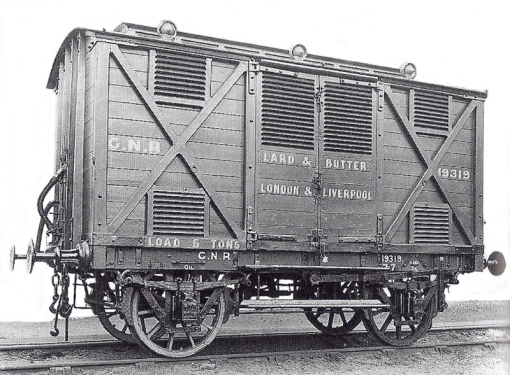Around the turn of the century, the Great Northern elongated their standard 6T covered vans to 18′ over headstocks but changed the design to an inside-framed body with sliding doors to the right hand side. Initial batches of these Dia.117 vans had 3′ 6″ Mansell wheels, opposite hand brakes, and retained the four end posts. Later batches which were rated at 8T, gained ventilators in the ends, losing two of the posts in the process. I would be very interested in the introductory date of these vans, but this entry is more concerned with the 18′ vans for perishable traffics.
Five ton perishable vans to 18′ retained the outside wooden cross frames of the 16′ designs and sported a variety of ventilator positions depending on the designated use. Diagram 110 was designated for fruit and milk traffic, and Diagram 111 for fish, the former having louvres in the tops of the cupboard doors, the latter having plain sliding doors to the left and right. All had clerestory louvred roofs with three torpedo vents each side.
Fish van no.8148 of 1899, built for traffic between Grimsby and London, exhibits all the contemporary standard fittings for GN vans designed for fast perishable goods; two foot boards, tall vacuum brake standard, screw couplings, safety chains, oil axle boxes, carriage-type swing-links to the springs, Mansell wheels, long spindle buffers, either-side brakes and carriage-style shaded lettering on the GNR brown oxide paintwork.
I’d be very interested to find out the date in which both diagrams 110 and 11 were introduced.


